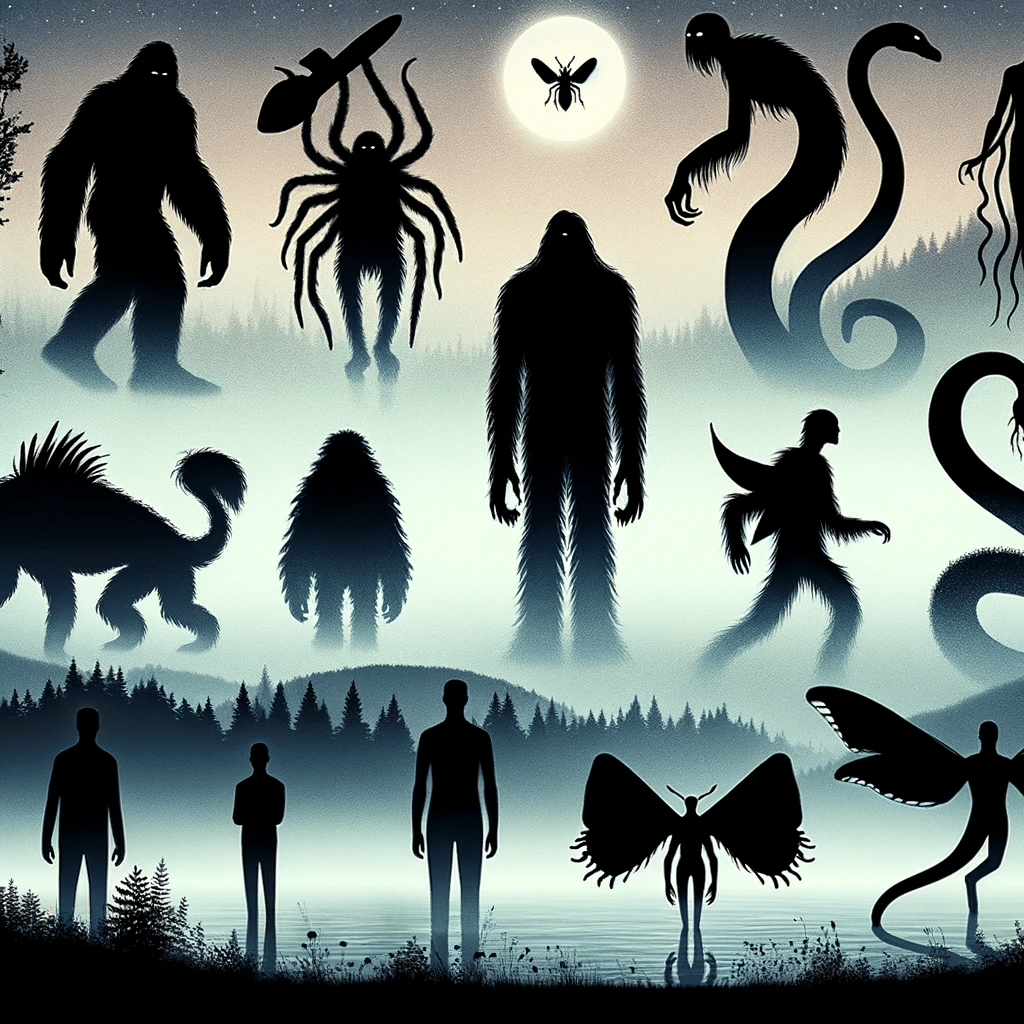Cryptozoology

Cryptozoology, a field that captures the fascination of many into the exploration and investigation of mysterious and elusive creatures whose existence has not yet been conclusively proven by mainstream science. These enigmatic beings, known as cryptids, often emerge from folklore, legends, and anecdotal accounts passed down through generations. Cryptozoology seeks to understand these creatures by examining the available evidence, gathering eyewitness accounts, and exploring the environments in which these creatures are believed to reside.
The history of cryptozoology can be traced back to ancient times when stories and myths of strange creatures were passed down orally or inscribed on ancient artifacts. It wasn’t until the 20th century that the term “cryptozoology” was coined by Belgian-French zoologist Bernard Heuvelmans, who is often considered the “father of cryptozoology.” Heuvelmans and his fellow cryptozoologists sought to bring a more systematic and scientific approach to the study of these elusive beings, examining available evidence and subjecting it to careful scrutiny.
Cryptozoology has its roots in various regions around the world, with each locale boasting its own collection of cryptids. In North America, Bigfoot, also known as Sasquatch, is perhaps the most famous cryptid, said to inhabit the dense forests of the Pacific Northwest. In Scotland, the Loch Ness Monster, affectionately nicknamed “Nessie,” is believed to dwell in the murky depths of Loch Ness. Meanwhile, in the Himalayas, the legendary Yeti, or “Abominable Snowman,” is thought to roam the snowy, mountainous terrain.
Dr. Jeff Meldrum, a professor of anatomy and anthropology at Idaho State University, is a renowned expert on the subject of Bigfoot. He has published a book, “Sasquatch: Legend Meets Science” (2006), which critically examines the evidence surrounding the existence of the creature, including footprints and eyewitness accounts. Meldrum’s work highlights the importance of scientific rigor in the field of cryptozoology, even as he remains open to the possibility of undiscovered creatures.
“The Mothman Prophecies” by John Keel is closely associated with cryptozoology. This book focuses on Keel’s investigation into sightings of a mysterious creature known as the Mothman, which was reported in Point Pleasant, West Virginia, during the 1960s. The Mothman, a creature described as having large wings and red glowing eyes, can be considered a cryptid, which places this book within the realm of cryptozoology.
Another notable figure in cryptozoology is Loren Coleman, a prolific author and researcher who has dedicated over four decades to the study of cryptids. Coleman has penned numerous books on the subject, including “Cryptozoology A to Z” (1999) and “Mysterious America” (2007). In his works, Coleman provides detailed accounts of various cryptids and the folklore surrounding them, as well as insights into the methods and challenges faced by cryptozoologists in their search for evidence.
The types of cryptids can be grouped based on their characteristics, habitats, or regions. Here is a list of some categories and examples of cryptids:
- Hominids: These cryptids are humanoid or ape-like creatures, often reported to be large and hairy.
- Bigfoot or Sasquatch (North America)
- Yeti or Abominable Snowman (Himalayas)
- Almas (Central Asia)
- Yowie (Australia)
- Orang Pendek (Indonesia)
- Lake and Sea Monsters: These cryptids are aquatic creatures that dwell in lakes, seas, or oceans.
- Loch Ness Monster or Nessie (Scotland)
- Champ (Lake Champlain, North America)
- Ogopogo (Okanagan Lake, Canada)
- Altamaha-ha (Altamaha River, Georgia, USA)
- Kraken (Norse mythology, various oceans)
- Winged Creatures: These cryptids are characterized by their wings and the ability to fly or glide.
- Mothman (Point Pleasant, West Virginia, USA)
- Thunderbird (Native American mythology, North America)
- Jersey Devil (Pine Barrens, New Jersey, USA)
- Owlman (Mawnan, Cornwall, England)
- Reptilian and Serpentine Creatures: These cryptids resemble reptiles or serpents, often described as large and elusive.
- Mokele-mbembe (Congo Basin, Central Africa)
- Mongolian Death Worm (Gobi Desert, Mongolia)
- Lizard Man of Scape Ore Swamp (South Carolina, USA)
- Tatzelwurm (Alps, Central Europe)
- Canine and Feline Creatures: These cryptids resemble large dogs, wolves, or big cats.
- Beast of Bodmin Moor (Cornwall, England)
- Beast of Gévaudan (France)
- Chupacabra (Puerto Rico, Latin America, Southern USA)
- Black Shuck (East Anglia, England)
- Other Mysterious Creatures: This category includes cryptids that do not fit neatly into the above categories or are less well-known.
- Flatwoods Monster (West Virginia, USA)
- Dover Demon (Dover, Massachusetts, USA)
- Loveland Frog (Loveland, Ohio, USA)
- Bunyip (Australian Aboriginal mythology, Australia)
There are instances where once-mythical creatures have been discovered and confirmed by mainstream science. One such example is the okapi, a giraffe-like mammal native to the Democratic Republic of Congo. Before its discovery in 1901 by British explorer Sir Harry Johnston, the okapi was considered a legendary creature known as the “African unicorn.” Similarly, the coelacanth, a prehistoric fish thought to have gone extinct 65 million years ago, was rediscovered in 1938 off the coast of South Africa. These discoveries serve as a reminder that our understanding of the natural world is continually evolving, and that cryptozoology, while often met with skepticism, can play a role in uncovering new species.
Cryptozoology is a fascinating field that explores the world of unexplained creatures and the possibility of their existence. By examining the available evidence, gathering eyewitness accounts, and critically evaluating claims, cryptozoologists strive to understand the unknown and contribute to our expanding knowledge of the natural world.

